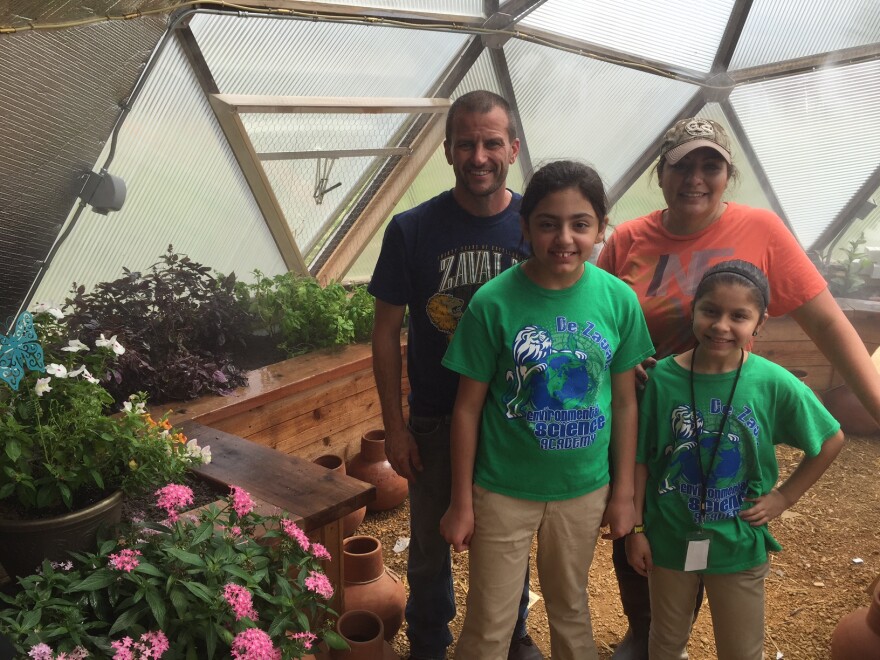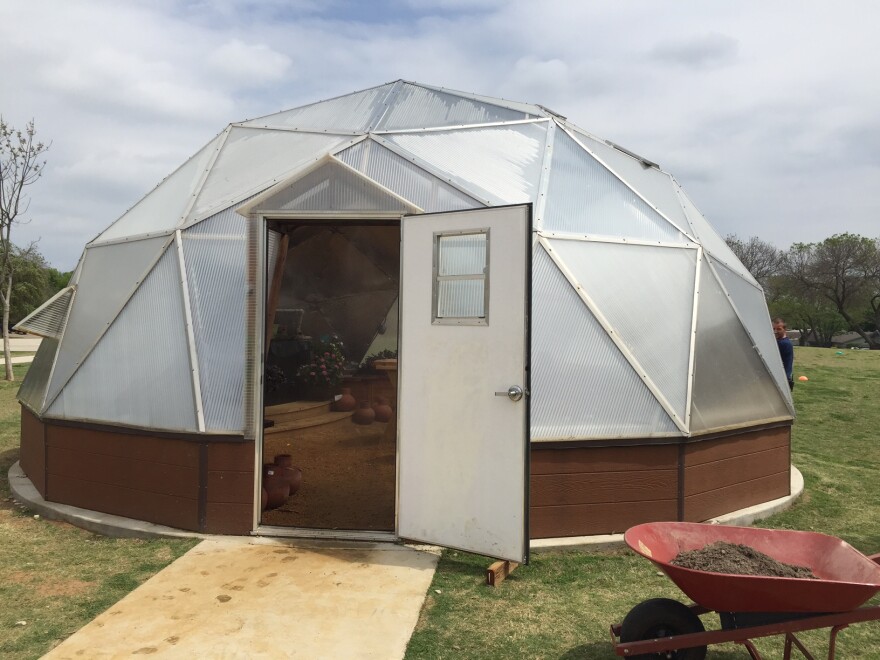During the past decade, it seems like every school has added a garden. Educators say the benefits range from kids learning about healthier food to improving their social and emotional health. In Grand Prairie, there’s an elementary school that goes way beyond the traditional school garden.
At Lorenzo de Zavala Environmental Science Academy, kids get quite the workout.
On this afternoon, fifth graders shovel soil delivered to the school. They drop it in buckets and a red wheel barrow. The buckets have a message printed in white letters that reads, “Let’s Do This.” This is not a job for the weary.
“Ladies, bring that bucket right there. We’ll fill that one, and then we can carry three buckets and the wagon, and you guys pull the wagon,” says Amanda Rodriguez, the environmental sciences coordinator.

Most of the elementary schools in Grand Prairie have gardens. But here, at Lorenzo’s Garden, kids and adults maintain 29 raised beds, a growing dome, which is kind of like a greenhouse, a chicken coop and a butterfly sanctuary.
“A lot of kids don’t know that your vegetables don’t come from cans or freezer bags or off a number 1 menu or a number 2 menu,” says Sammy Wren, environmental science teacher. “They’ve learned that it comes from the ground and they grow it from a seed or they grow it from a plant.”
Wren says he wants his students to become conservationists.
“And then, I like to instill in them a lot of hard work and them some ownership and to take pride in what they do,” he says.
Sofia Troxell, who’s 11, seems to be doing just that as she gives a tour.
“So this is our water erosion deposition weathering bed, where students can have hands-on learning with their teachers,” she says.
Asked to explain what that means, she doesn’t hesitate.

“Well, we can put rocks and pebbles or dirt in it, and the teachers can turn this on and it will flow down water,” Sofia says. “So they can see what happens to it, how it moves or swerves.”
The environmental science academy has been open a couple of years, and everything about it has a purpose. The roof is shaped like the letter V to collect rainwater, which flows into a cistern, or big well. There are composting bins filled with lawn clippings and leaves from the neighborhood.
Working outside can be messy, but Sofia says she doesn’t mind getting some soil underneath her fingernails.
“Especially because it’s so much fun and if you touch the top of it, it’s warm,” she says. “But, if you go underneath, it’s moist and cold.”
So far this spring, the students have planted lettuce, tomatoes, artichokes, asparagus and herbs. Grand Prairie residents can rent out part of a garden bed for $5. And if the weather outside isn’t quite right, you can garden inside the growing dome. It has a misting system and an indoor pond with small fish that eat mosquito larvae.

Sofia and 10-year-old Sky Flores walk ahead to show yet another feature in this garden.
“This is our chicken coop,” Sofia points out. “We have 16 chickens. They’re all hens because … ”
“We don’t want any fertilized eggs, we want eggs we can sell,” Sky says.

If all of this sounds a bit advanced, that’s because the environmental science coordinator knows a thing or two about this.
“I grew up a migrant student,” says Rodriguez, the environmental science coordinator. “My parents started migrating to Indiana to harvest tomatoes and work corn.”
Rodriguez applied for a grant to get the garden started. The school also got help from the group Real School Gardens, which works with schools in low-income neighborhoods. She says she wants kids to learn the science of gardening and know this is something they can do on their own.
“And so we have begun to see that,” Rodriguez says. “We will hear many of our students say, ‘We’ve started a garden at home. My grandparents are back to planting and growing our own vegetables.’ ”
At this school, learning doesn’t stop at the garden. Once the vegetables are ready for harvest, the budding gardeners will sell the produce and eggs to their neighbors. Soon their handiwork will appear on plates across town.






